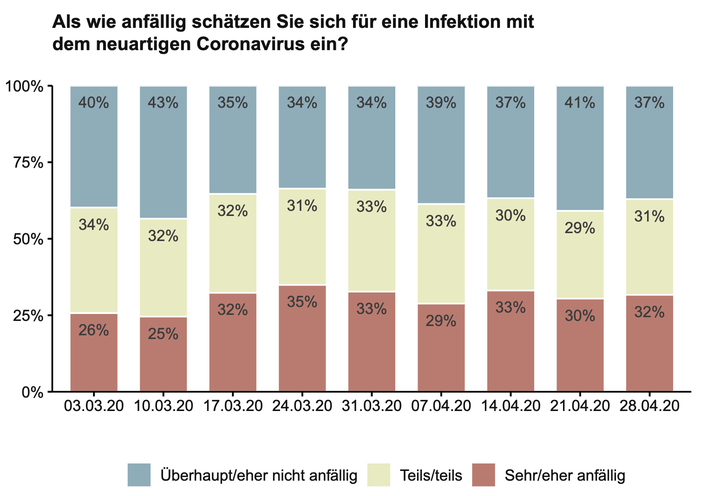German COVID-19 Snapshot Monitoring (COSMO)-Welle 9 (28.04.2020)
Abstract
Mobility increases as risk perception decreases, perceptions of a second wave, exit strategies, vaccinationsRisk perception, fears and concerns stabilize at a lower level (compared to mid-March). Acceptance of andcompliance with the measures further decreases (e.g. closing schools, restricting personal contacts). Worriesabout the economic situation remain at a stable high level. All other worries tend to decline, especially theconcern about overburdening the health system. Mobility (measured with independent mobile phone data)and the perception that measures are exaggerated correlated highly (with higher mobility taking place whenmeasures were evaluated as more exaggerated). The proportion of respondents wearing masks almost doubledfrom 34% in the previous week to 60%. Younger people and men should be supported in obtaining masks.91% have already heard that there may be a second wave of the pandemic; 70% of all respondents think a2nd wave is (rather) likely. Most respondents expect it in 2 months. The more likely or closer a 2nd wave isperceived, the greater was their willingness to adhere to the measures now. Thus, fear of a second wave seemsto be a great motivation for adhering to the current rules. For exit scenarios, sufficient capacity of intensivecare units and the rejection of a mandatory tracing app were most influential factors. Schools, kindergartensand restaurants should not be opened immediately, but later. Immediate opening of churches and footballmatches (discussed frequently) was important only for a small number of people. 30% of the planned adultvaccinations were cancelled due to the corona situation (childhood vaccinations: 17%). For 79% of the adults(68% children) no catch-up date was agreed.
